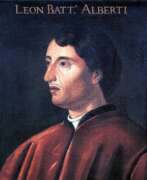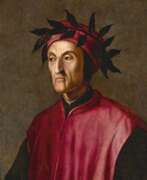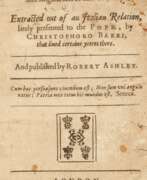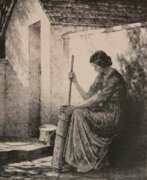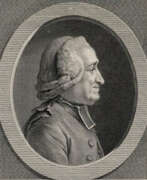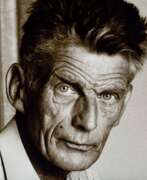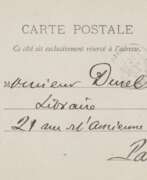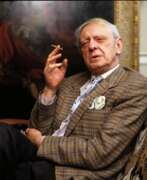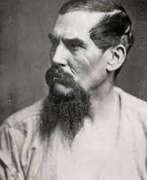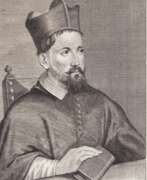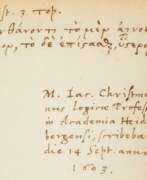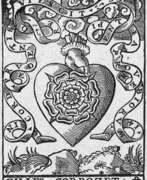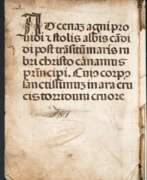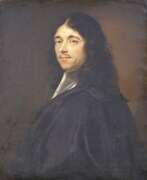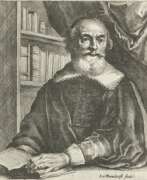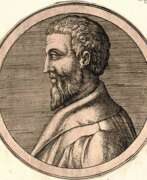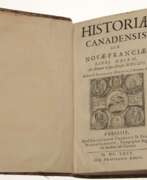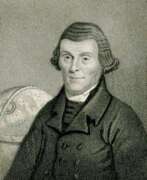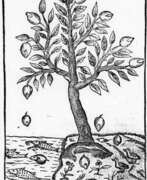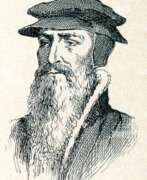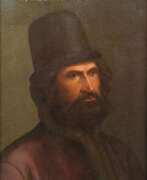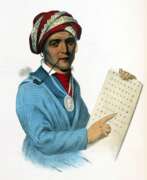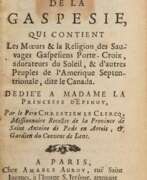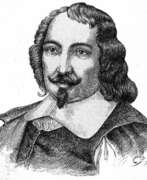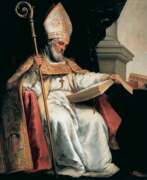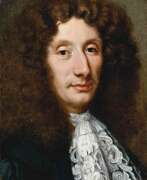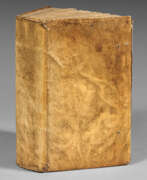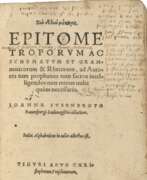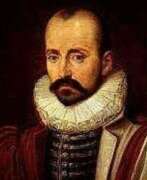Linguists
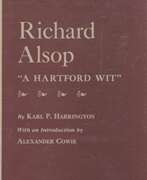

Richard Alsop was an 18th-century American writer and poet.
Alsop was one of the founders of the later famous literary group, the Hartford Witters. He wrote poetry in the journals The Political Greenhouse and The Echo, the latter soon becoming primarily concerned with satirical parodies of public speeches and articles of a political nature.
Alsop also published various translations from French and Italian.
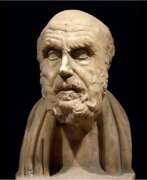

Aratus Solensis was an ancient Greek didactic poet.
It is known that he was a native of the ancient city of Soli in Cilicia, and studied under the famous philosophers of his time in Ephesus, Cos and Athens. Around 276 BC, Aratus was invited to the court of the Macedonian king Antigonus II Gonatus and expounded in verse his victory over the Gauls. Here he also wrote his most famous work in modern times, the hexameter poem Phenomena, which sets forth the astronomical knowledge of the time. He then spent some time at the court of Antiochus I Soter of Syria and returned to Macedonia.
The poet's second extant poem is Diosemeia ("On the Omens of the Weather"). These two poems by Aratus were very popular in both the Greek and Roman worlds. He was translated and quoted by Ovid and Cicerone, and a translation into Arabic was made in the 9th century.
In addition to poetry, Aratus practiced medicine, grammar, and philosophy.
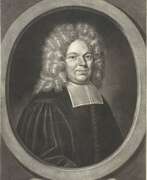

Jacques Basnage de Beauval was a French theologian and historian, diplomat and writer.
His father was a prominent lawyer and his grandfather and great-grandfather were pastors, Jacques studied theology and languages at the Academy of Saumur, then at Geneva and Sedan. In 1676, Jacques Basnage was appointed pastor at Rouen during the revocation of the Edict of Nantes, was forced to flee France for Holland, where he worked as a theologian, polemicist, historian, and diplomat in the service of the Grand Pensioner Hensius.
In 1717, on behalf of Holland, Basnage was sent to sign the treaty of the Triple Alliance (France, Holland, England). In the Annals of the United Provinces (1719-1726), compiled from the peace negotiations held at Münster, he displays breadth of vision, wisdom, and impartiality.
About 1719 Jacques Basnage was appointed historiographer of the Dutch states. He wrote several books on the Bible, the history of the Church, and the history of the Jewish people. Among the best known of these are his History of the Religion of the Protestant Denominations (1690), History of the Church of Jesus Christ to the Present Time (1699), written from Protestant positions, and History of the Jews (1706), as well as Jewish Antiquities, or Critical Notes on the Republic of the Jews (1713).
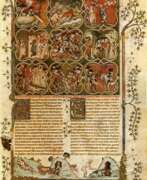

Pierre Bersuire, also known as Petrus Berchorius, was a French medieval writer, Benedictine monk, translator, and encyclopedist.
He was the leading French scholar of his time and friend of Petrarch, author of encyclopedic works on morality, and the first French translator of Titus Livy's History from the Foundation of the City. Very interesting for researchers is Pierre Bersuir's text Ovidius Moralisatus - written in Avignon in 1340 and spreading rapidly, it is a systematic allegorical analysis of the Metamorphoses, aimed at the current situation in church and society.
Bersuire was also an eloquent preacher and author of voluminous sermons.
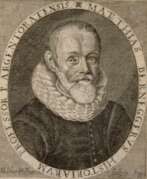

Matthias Bernegger (latin: Bernegerus or Matthew) was an Austrian and French scientist, astronomer, mathematician, linguist and translator.
He was educated in Strasbourg, where he developed a special interest in astronomy and mathematics. Bernegger corresponded with the famous scientists Johannes Kepler and Wilhelm Schickard. From 1607, Bernegger taught at the Strasbourg Gymnasium, and in 1616 he was appointed professor at the Academy.
Bernegger is known for his translations of Justinian and Tacitus, and in 1612 translated into Latin Galileo's 1606 work on the proportional compass, adding considerably to it. These additional detailed annotations by Bernegger made Galileo's compass much easier to use, making it the first mechanical calculating device that could be applied to a wide variety of complex problems. In 1619 Bernegger prepared a three-volume manual of mathematics, and in 1635 he translated Galileo's Dialogue on the Two Mass Systems of the World.
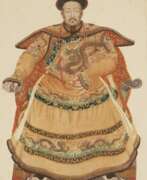

Joachim Bouvet was a French Jesuit monk and missionary who worked in China.
Joachim Bouvet was one of six Jesuit mathematicians chosen by Louis XIV to travel to China as his envoys and work as missionaries and scholars. In 1687 in Beijing, Bouvet began this work, especially in mathematics and astronomy, and in 1697 the Chinese emperor Kangxi (1654-1722) sent him as ambassador to the French king. Kangxi expressed his wish that Bouvet should bring more missionary scientists with him. Thus, in addition to his scholarly work, Bouvet was also an accomplished diplomat and served as a liaison between the Chinese Emperor Kangxi and King Louis XIV of France.
Bouvet brought to France a manuscript describing Kangxi's life with an eye for diplomatic subtleties, as well as a collection of drawings depicting graceful Chinese figures in traditional and ceremonial dress. The first French edition of The Historical Portrait of the Emperor of China was published in Paris in 1697, and was subsequently translated and published in other languages. And Bouvet returned to China in 1699 with ten new missionaries and a collection of King Louis XIV's engravings for Emperor Kangxi. He remained in China for the rest of his life.
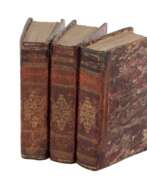

Jean-Baptiste-Joseph Breton de la Martinière was a French stenographer, journalist, translator and writer.
Breton was a founding member of a group of stenographers of the Legislative Assembly and stenographed debates from 1792. He became parliamentary reporter in 1815 and remained so until his death. He was also one of the founders of Le stenographer of the Chambers and the Gazette des tribunals. A polyglot and knowing almost all the languages of Europe, Breton often acted as an interpreter in the courts.
Breton de la Martinière published books on China, as well as on Egypt and Syria, where he used materials by the scholar Jean-Joseph Marcel, who accompanied Napoleon to Egypt in 1798. The text contains much information on the customs, religion, and antiquities of Egypt, as well as a fascinating description of the recent French occupation.
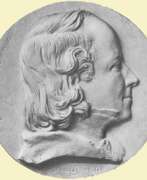

Eugène Burnouf was a French Orientalist scholar, linguist, and researcher of Buddhism in the mid-19th century.
Burnouf studied at the School of Law and the Collège de France. In collaboration with the Norwegian orientalist Christian Lassen, he published Essai sur le Pali (1826) in one of the languages of Indian Buddhism. He then undertook the decipherment of Zoroastrian manuscripts.
As professor of Sanskrit at the Collège de France (1832-1852), Burnouf made a significant contribution to the study of Zoroastrianism. He also made a Sanskrit edition and French translation of the important Hindu text Le Bhâgavata Purana (1840) and published a history of Buddhism (1845).
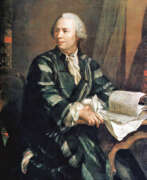

Leonhard Euler was the greatest mathematician of the 18th century and history in general.
Euler brilliantly graduated from the University of Basel and entered the St. Petersburg Academy of Sciences, then began to work at the Berlin Academy, and later to lead it. In 1766, the scientist received an invitation from the Russian Empress Catherine II and again came to St. Petersburg to continue his scientific work.
Here he published about 470 works in a wide variety of fields. One of them is a large-scale work "Mechanics" - an in-depth study of this science, including celestial mechanics. Euler by that time was practically blind, but continued to be actively engaged in science, in the records he was helped by his son Johann Albrecht and stenographers. Leonhard Euler made many fundamental discoveries that brought great benefit to mankind.
His massive contribution to the development of mathematics, mechanics, physics and astronomy cannot be overestimated, and his knowledge in the most diverse branches of science is admirable. During his lifetime, he published more than 850 works that contain in-depth studies of botany, chemistry, medicine, ancient languages, and music. Euler held membership in many academies of science around the world.
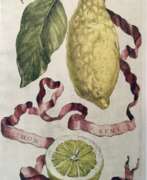

Giovanni Battista Ferrari was an Italian Jesuit scholar, professor of Oriental languages and botanist.
Giovanni Ferrari had linguistic abilities and at the age of 21 knew Hebrew well, spoke and wrote Greek and Latin perfectly, and learned Syriac. He became professor of Hebrew and rhetoric at the Jesuit College in Rome and edited a Syriac-Latin dictionary in 1622.
Ferrari always showed great interest in the systematics and classification of fruits. He was appointed head of the chair of Hebraistics at the College of Rome and held this position for 28 years. In 1623, Ferrari became horticultural advisor to the family of Pope Urban VIII at the Palazzo Barberini, which soon became famous for its rare plants, including orange trees. Ferrari later wrote the first book on citrus trees, equating them to the mythical golden apples of the Hesperides conquered by Hercules. Orange trees became an important element of Baroque gardens, symbolizing the rewards earned by the magnanimous prince. The scientist also described the medicinal properties of citrus fruits.
In 1633, the first treatise on floriculture, De florum cultura, was published. In it, Ferrari describes garden layout with contemporary examples, flower specimens and their cultivation, and general horticulture.
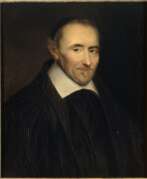

Pierre Gassendi was a French Catholic priest, Epicurean philosopher, mathematician, astronomer and researcher of ancient texts.
He taught rhetoric at Diné and philosophy at Aix-en-Provence. Gassendi's Syntagma philosophicum, the result of his historical research and philosophical reflections, is a well-known work. Several of his works on astronomy, physics and mechanics were also published in the 17th century.
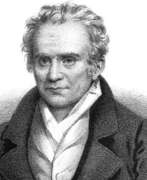

Johann Anton Güldenstädt was a Russian scientist, naturalist and traveler born of Baltic Germans.
Born in Riga, then part of the Russian Empire, Güldenstädt studied pharmacy, botany and natural history in Berlin from 1763. At the age of 22, he earned a doctorate in medicine from the University of Frankfurt. The following year he became a member of an expedition of the Russian Imperial Academy of Sciences sent by Catherine the Great to explore the southern borders of the Russian Empire.
Güldenstädt traveled through Ukraine and the Astrakhan region, as well as the North Caucasus and Georgia. In March 1775 the scientist returned to St. Petersburg. The results of this expedition were published after his premature death from typhoid fever at the age of 36.
This expedition made a great contribution in the fields of biology, geology, geography and especially linguistics. Guldenstedt made detailed notes on the languages of the region. Güldenstädt's materials are still constantly consulted by linguists. Dictionaries of one and a half dozen languages and dialects of the Caucasian peoples compiled by him 250 years ago serve as a valuable basis for research in linguistics and toponymy. He was one of the first European scholars to study the life and culture of the Kumyks, Ingush, Ossetians, Chechens and other North Caucasian peoples.
Güldenstädt was also the first to describe and characterize the soils, vegetation and fauna of the South Russian steppes, and one of the first to explain the origin of black soil.
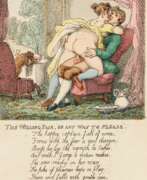

John Camden Hotten was a British publisher, writer, linguist and bibliophile.
By mid-1855, Hotten had opened a small bookstore in London and then established his own publishing business, which after his death became Chatto & Windus. Hotten's publishing house published many works by classic and contemporary writers. After spending about six years in America, he was the first to introduce a number of American writers to the British public, including James Russell Lowell, Oliver Wendell Holmes, and Bret Harte.
Hotten compiled The Dictionary of Modern Slang, Slang, and Vulgar Words, first published in 1859 and reprinted many times thereafter. His other major work is A Handbook of Topography and Family History of England and Wales (1863). Hotten also wrote and edited literary and biographical material in various periodicals.
Hotten was a collector, author, and secret publisher of erotic works, which were illustrated, among others, by the famous caricaturist Thomas Rowlandson (1757-1827).
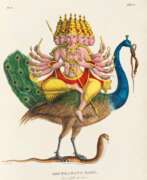

Eugene Jacquet, full name Eugene Vincent Stanislas Jacquet, was a Belgian orientalist and linguist.
From a young age, Eugene Jacquet tried to learn as many Oriental languages as possible, including Chinese, Sanskrit, Arabic, Persian and Turkish, as well as Malay and Indian. At first he was interested in sinology, but in the end he was mainly concerned with Indology. Eugène Jacquet was very talented and was also interested in epigraphy, numismatics and paleography.
Jacquet corresponded extensively with Orientalist scholars in Europe and India (e.g., Prinsep) and had grand plans for his future, but unfortunately he died at the age of only 27 from tuberculosis. Perhaps his most significant achievement was his participation in the decipherment of the ancient Persian cuneiform script.
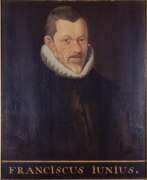

Francis Junius the Elder, born François du Jon, was a French linguist, exegete and professor of Reformed theology, and diplomat.
Junius first studied law and then theology and became a student of Jean Calvin and Theodore Beza in Geneva. For his success and knowledge of languages he was appointed minister at Antwerp, but was forced to flee to Heidelberg in 1567.
In collaboration with Immanuel Tremellius he wrote one of the significant translations of the Bible into Latin, and his theological work De Vera Theologia is the most important work on Reformed dogmatics. Some of du Jon's works were published in 1882 by Abraham Kuyper in his Reformed Library. His son François du Jon the Younger (1591 - 1677) became a noted art historian and founder of Germanic philology.
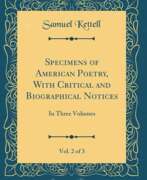

Samuel Kettell was an American writer and editor.
He was an accomplished self-taught linguist and mastered fourteen languages. His humorous publications in the Boston Courier under pseudonyms attracted attention and in 1848 he became the permanent editor-in-chief of this newspaper.
Kettell's major work, however, was Samuel Griswold Goodrich's Samples of American Poetry with Critical and Biographical Notes, which was published in 1829. This comprehensive catalog is the first bibliography of early American poetry, and includes the works of nearly 200 poets before 1829.Kettell provided biographical sketches of each writer, from Cotton Mather to Francis Scott Key, Washington Irving, and Sarah Josepha Hale.
In addition, Kettell published A Personal Narrative of Columbus's First Voyage (1827) and Accounts of the Spanish Inquisition (1828).
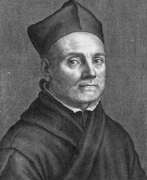

Athanasius Kircher was a German scholar, inventor, professor of mathematics and oriental studies, and a friar of the Jesuit order.
Kircher knew Greek and Hebrew, did scientific and humanities research in Germany, and was ordained in Mainz in 1628. During the Thirty Years' War he was forced to flee to Rome, where he remained for most of his life, serving as a kind of intellectual and information center for cultural and scientific information drawn not only from European sources but also from an extensive network of Jesuit missionaries. He was particularly interested in ancient Egypt and attempted to decipher hieroglyphics and other riddles. Kircher also compiled A Description of the Chinese Empire (1667), which was long one of the most influential books that shaped the European view of China.
A renowned polymath, Kircher conducted scholarly research in a variety of disciplines, including geography, astronomy, mathematics, languages, medicine, and music. He wrote some 44 books, and more than 2,000 of his manuscripts and letters have survived. He also assembled one of the first natural history collections.
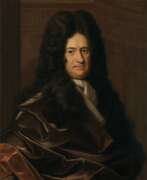

Gottfried Wilhelm Leibniz was a German philosopher and a prominent polymath in many fields of science.
Leibniz was a universal genius; he showed his talents in logic, mathematics, mechanics, physics, law, history, diplomacy, and linguistics, and in each of the disciplines he has serious scientific achievements. As a philosopher, he was a leading exponent of 17th-century rationalism and idealism.
Leibniz was a tireless worker and the greatest scholar of his time. In the fate of Leibniz, among other things, there is one interesting page: in 1697, he accidentally met the Russian Tsar Peter I during his trip to Europe. Their further meetings led to the realization of several grandiose projects in Russia, one of which was the establishment of the Academy of Sciences in St. Petersburg.
Gottfried Wilhelm Leibniz was also the founder and first president of the Berlin Academy of Sciences and a member of the Royal Society of London.
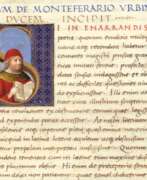

Georgius Merula, also Giorgio Merlani di Negro or Georgius Merula Alexandrinus, was an Italian humanist scholar, philosopher, philologist and historian of the Renaissance.
He held the position of professor and taught in Milan and Venice. But became known for being the first to print the works of Plautus (1472), Scriptores rei rusticae, Cato, Varron, Columella, and Palladius (1472). He also published commentaries on parts of Cicero (especially De finibus), Ausonius, Juvenal, Curtius Rufus, and other classical authors. Merula also labored in historical research and described several significant battles.
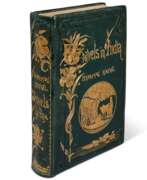

Ardaseer Framjee Moos was a 19th-century Indian politician.
Ardaseer Framjee Moos was educated and later taught at Elphinstone Institute, and was the secretary of the Bombay Native Common Library from 1860 for more than two decades. An active participant in Parsi reform movements and Mumbai political life, he became treasurer of the Bombay Association in 1876. Moos prepared and published A Journal of Travels in India (1871), the illustrations in which are various views of the principal buildings of Lucknow, Agra, Dehli, and Calcutta. He also published dictionaries of English and Gujarati.
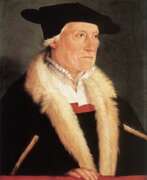

Sebastian Münster was a German Renaissance scholar, cartographer and cosmographer, historian and linguist-translator.
Münster studied at the University of Tübingen and later taught at the Universities of Basel and Heidelberg. He published several editions of Hebrew grammars and translations from that language, and was the first German to produce an edition of the Hebrew Bible.
In 1544 Münster published his Cosmographia, which was the earliest description of the history, geography, and organization of the world in German. This book was a great success, translated into many European languages and reprinted more than twenty times. "Cosmographia" contained many illustrations and geographical maps of the continents of the world, created by the best engravers of the time.
Among his other works were the "Trilingual Dictionary" (1530) in Latin, Greek, and Hebrew and the "Map of Europe" (1536).
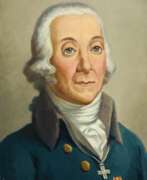

Peter Simon Pállas was a German and Russian scientist-encyclopedist, naturalist and traveler, who gave almost all his life to the service of Russia.
The breadth of his scientific interests made him a true encyclopedist, but he was particularly interested in natural sciences. By the age of 25, Pallas had already acquired European fame as a major scientist-naturalist. At the same time he received an invitation from the St. Petersburg Academy of Sciences, where he was offered a professorship. In 1767, Pallas arrived in St. Petersburg with his wife and soon led several important expeditions to Siberia and southern Russia. In his numerous ethnographic descriptions, the scientist was the first to report in detail on the Kalmyks, Tatars, Mordvins, Chuvashs, Nagaians, Tungus (Evenks), Votyaks (Udmurts), and Cheremis (Mari). In addition, he brought with him large natural-scientific collections. Later he traveled with scientific expeditions to Kamchatka, the Kuril Islands, Crimea and other previously unexplored lands.
In 1785 Catherine II attracted Pallas to the collection and comparative analysis of the languages of the peoples inhabiting America, Asia, Europe and Russia, and he compiled and published a comparative dictionary in two parts (1787-1789), in which more than 200 languages and dialects of the peoples of Asia and Europe were presented. In the last years of his life, among other things, Pallas was engaged in the preparation of a fundamental three-volume work on the fauna of Russia, Zoographia rosso-asiatica ("Russian-Asiatic Zoology"), in which more than 900 species of vertebrates, including 151 species of mammals, of which about 50 new species were introduced. This work was so extensive, and the descriptions of the animals were so thorough and detailed, that until the early 20th century the book remained the main source of knowledge about the fauna of Russia. In 1810. Peter Pallas went to Berlin to prepare illustrations for this work, but a year later the famous scientist died and was buried in Berlin.
A volcano in the Kuril Islands, a reef off New Guinea, and many animals and plants are named after Pallas.
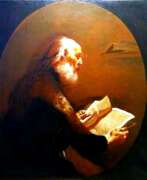

Celio Rodigino (Latin: Caelius Rhodiginus), real name Ludovico Ricchieri, was an Italian writer, educator and Renaissance humanist.
Rodigino studied in Ferrara and Padua, and then was professor of Greek and Latin at Rovigo. In 1515 he became chair of Greek at the University of Milan.
His principal work was Antiquarum Lectionum in sixteen books, published in Venice in 1516. In this work Rodigino collected a considerable number of short essays and notes on Latin and Greek antiquity, from literature, philology, and science to philosophy, history, anthropology, and morality, as well as reflections on ancient music. He also wrote commentaries on Virgil, Ovid, and Horace.
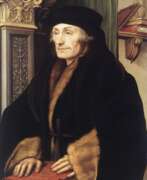

Desiderius Erasmus, also Erasmus of Rotterdam, or simply Erasmus (Latin: Desiderius Erasmus Roterodamus, Dutch: Gerrit Gerritszoon) was a Dutch humanist, philosopher, and the greatest scholar of the Northern Renaissance.
He was illegitimate and brought up under the name Gerhard Gerhards, later in Latin his name was dubbed Desiderius Erasmus. At the age of 13, the boy was sent to a monastery, where he later took the ministry. Erasmus read a lot, improving in Latin and Ancient Greek, studied oratory. A few years later he received the post of secretary to the bishop of the French city of Cambre. From 1493 to 1499 Rotterdam lived in Paris, then in London he was introduced to Thomas More, John Fisher, and John Colet.
Erasmus was constantly on the move, rarely staying in one place and traveling frequently between the Netherlands, Britain, France and Italy. In Turin he earned a doctorate in theology and was received by the Pope, then taught ancient Greek and theology at Cambridge. He corresponded with the rulers of various countries, popes and cardinals, and with statesmen, answering their questions of a scientific, political, and philosophical nature. As a true humanist, Erasmus of Rotterdam adhered to the ideas of a scientific spirit that favored research and true knowledge.
Among the merits of Rotterdamsky study of religious texts from a scientific position, critical interpretation of theology. Erasmus was able to lay the groundwork for historical-critical study of the past, especially in his studies of the Greek New Testament and the church fathers. His educational writings helped to replace the old school curriculum with a new humanistic emphasis on the classics.
In 1501, Erasmus produced a religious and ethical treatise, The Arms of the Christian Warrior, published in 1504. His work entitled "The Praise of Folly" was reprinted 40 times only during the author's lifetime, the book has been translated into all popular languages of the world. The series "Conversations in a Simple Way" (1518-1533) is among the most popular books on pedagogy. Erasmus promoted respect and care for children, opposing violence and corporal influence. He also promoted the idea that education should be compulsory for everyone.
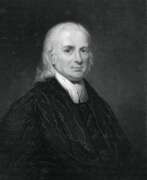

Christian Friedrich Schwarz was a German Lutheran missionary to India, a polyglot and diplomat.
Schwarz knew many languages, including Hebrew, Greek, Sanskrit, and Persian. Very young, he set out on a mission to India in early 1750 and was very successful. Schwartz was favorably received by Indian royalty, he taught Raja Serfoji of Tanjore, and was greatly respected by the local people for his good works.
The results of Christian Schwartz's missionary work exceeded all expectations. Schwartz founded several schools in India and had a significant impact on the establishment of Protestant Christianity in southern India. He lived in India until the end of his life and was buried with honors at St. Peter's Church in Maharnonbuhavadi, Thanjavur.
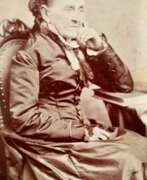

Julia Evelina Smith was an American translator and linguist and suffragist.
Julia Smith grew up on a wealthy farm in Connecticut with four sisters who were active in favor of women's education, abolition, and suffrage. Julia began studying biblical Greek in 1843, as well as Latin and Hebrew, to make a literal translation of the Bible and to clarify the predictions of Christ's resurrection in 1844. After reading the Bible in its original languages, she set about creating her own translation, which she completed in 1855.
The work is a strictly literal translation: a Greek or Hebrew word is always translated by the same word wherever possible. It was not until 21 years later, in 1876, that Julia Smith finally achieved publication at her own expense. This edition was the first complete translation of the Bible by a woman. By the time she was 84 years old, Julia Smith was still successful as a linguist and also as an activist for women's suffrage.
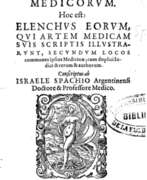

Israël Spach (also Israelis Spachius) was a German and French physician, medical writer and teacher of medicine.
Spach studied at the University of Tübingen, receiving the degree of doctor of medicine, and from 1589 taught medicine and Hebrew at the University of Strasbourg, with the rank of professor of medicine. He was characterized by a high bibliographical education.
Spach was the author of a gynecological encyclopedia, Gynaeciorum sive de mulierum tum communibus, tum gravidarum, parientium, et puerperarum affectibus et morbis, published in Strasbourg in 1597. It was a very significant book for its time.
Israël Spach also wrote Nomenclator scriptorum medicorum..., published in Frankfurt in 1591, which was the first attempt at a bibliography on medical subjects. It was organized under very broad subject headings, with indexes of authors and subjects.
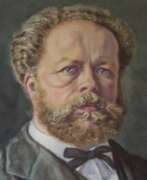

Leonhard Steiner was a Swiss industrialist, artist, and playwright.
Leonhard Steiner was the son of a wealthy silk manufacturer and, having artistic and musical inclinations, was forced to take over his father's business. In the mid-1870s, among other duties, he was president of the Zurich Stock Exchange and served as president of the Exchange Association, but his activities in this field failed.
Steiner was forty-six years old when he decided to devote himself fully to painting and achieved a certain skill. He even managed to feed his family of ten through this labor. He painted high-altitude landscapes, which were very popular. Steiner also created several comedies, edited a Swiss-German dictionary and was an expert in the dialect of the city of Zurich. His work was also closely linked to the musical life of the city, as he was the longtime president of the men's choir. To this day, Steiner remains a highly respected man in Zurich precisely because of his work in the arts.
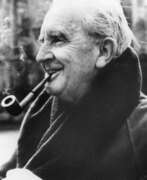

John Ronald Reuel Tolkien was a British writer and poet, translator, philologist, and linguist.
Tolkien wrote many works in the genre of magical fiction. He became world famous for his fantasy books The Hobbit (1937) and The Lord of the Rings (1954-55).
"The Hobbit" was published in 1937 with drawings by the author and proved so popular that the publisher asked him to write a sequel. The result, 17 years later, was Tolkien's masterpiece, "The Lord of the Rings," which was voted the best book of the 20th century. By the beginning of the 21st century, more than 50 million copies had been sold in 30 languages. The film version of "The Lord of the Rings" by New Zealand director Peter Jackson, released in three parts in 2001-2003, broke world viewing records.
Tolkien has been called the "father" of modern high fantasy literature.
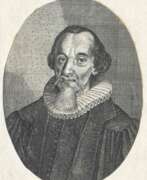

Immanuel Tremellius or Giovanni Emmanuele Tremellio was an Italian reformer, Hebraist, translator, and professor of Hebrew.
Born in Ferrara to a Jewish family, Tremellius was educated in Padua and converted to Catholicism in 1540, but converted to Protestantism a year later and had to move from place to place. He taught Hebrew at Srasburg, at Cambridge, and later became professor of Old Testament at Heidelberg, Germany (1561). He eventually found refuge at Sedan College, where he died.
Immanuel Tremellius' main literary work was a Latin translation of the Bible from Hebrew and Syriac. He also translated Calvin's Catechism into Hebrew and Greek (1551) and published Bucer's Commentary on Ephesians, based on lectures he had heard at Cambridge (1562), as well as an Aramaic and Syriac Grammar (1569).
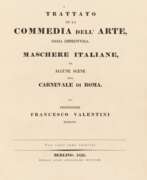

Francesco Valentini, full name Francesco Cosma Damiano Valentini, was an Italian linguistic scholar, teacher and translator who worked in Germany.
Valentini held a doctorate and was the Royal Prussian Professor of Italian Language and Literature in Berlin. From 1831 to 1836, he published an Italian-German dictionary in four volumes in Leipzig.
One day Valentini was invited to give a lecture on the theater and carnival masks of his native Rome. The lecture was such a success that it was later published in 1826 by the Berlin art dealer and publisher Wittich, who illustrated it with charming color engravings based on drawings by the Berlin artist Johann Heinrich Stürmer. The book was published in German and Italian.
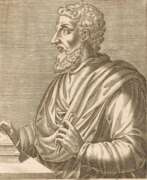

Marcus Terentius Varrō, sometimes called Varro of Reatinus, was an ancient Roman scholar-encyclopedist and writer.
Varro was a very prolific writer: the titles of his 74 works are known, totaling 620 books. Varron was engaged in logic, language, poetry, history, law and geography, history, art, history of literature, theory of music. Judging by the surviving accounts of his contemporaries, the most significant of Varron's lost works were "Divine and Human Antiquities" (Antiquitates rerum humanarum et divinarum) in 41 books and "Portraits" (Imagines) in 15 books, which contained biographies of famous Greeks and Romans, as well as 700 portraits that illustrated the text. The treatise "On Agriculture" (De re rustica) in three books has survived in complete preservation.
